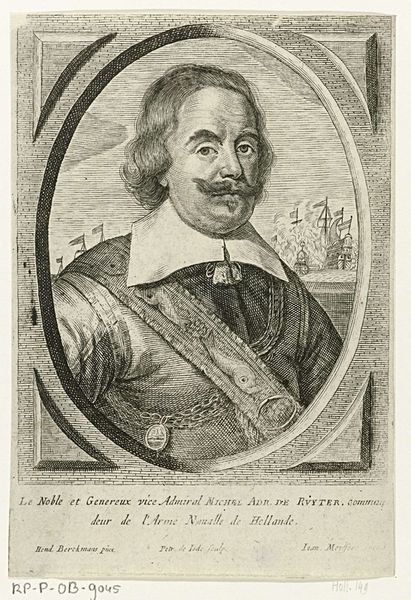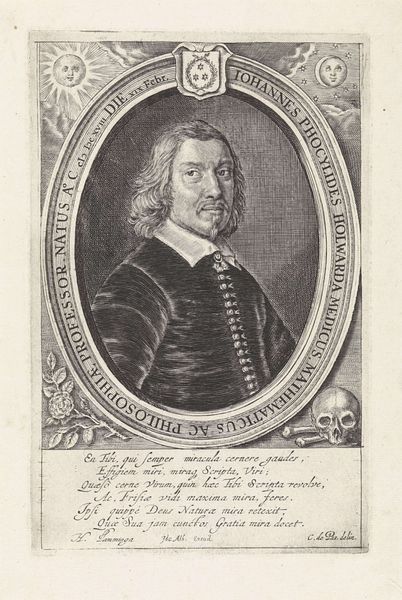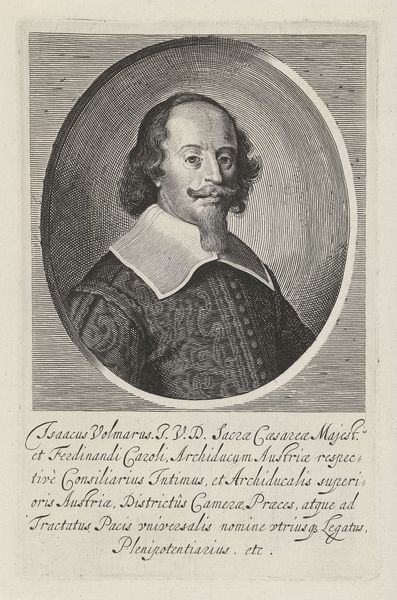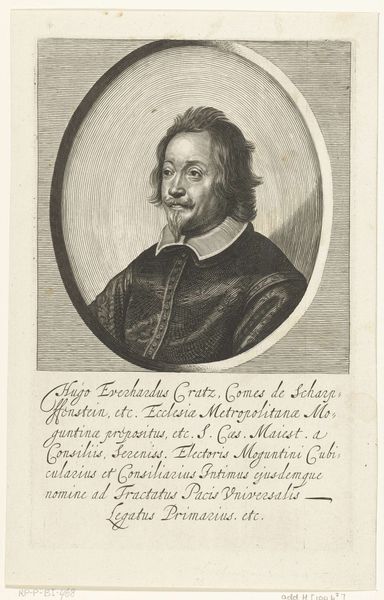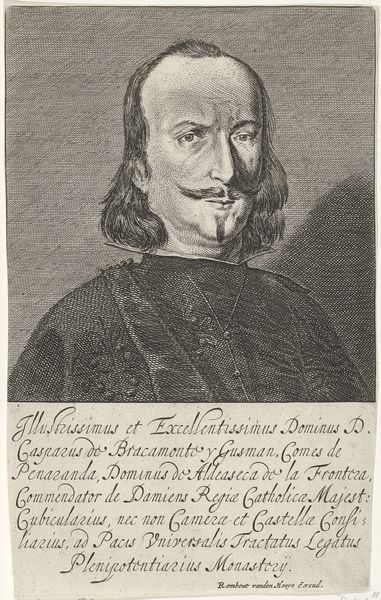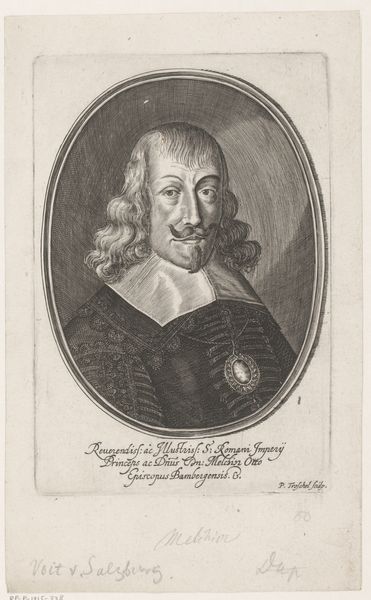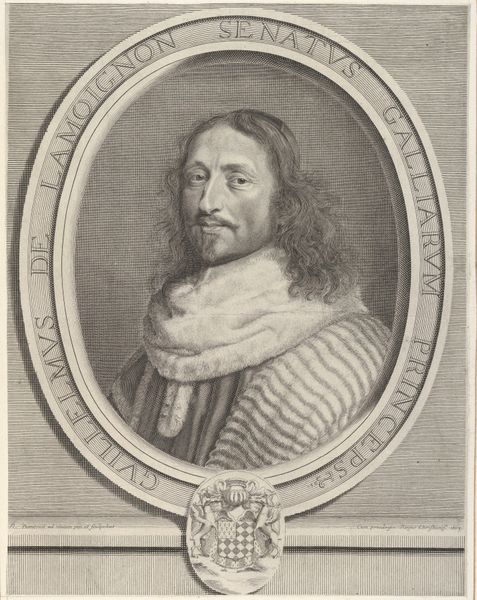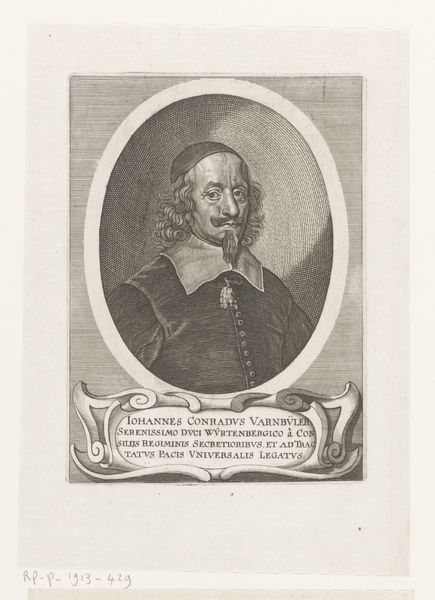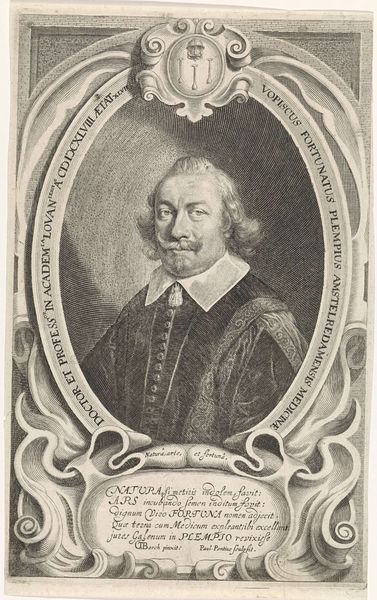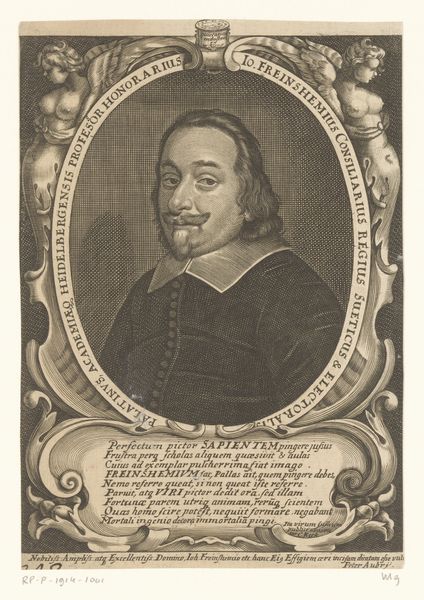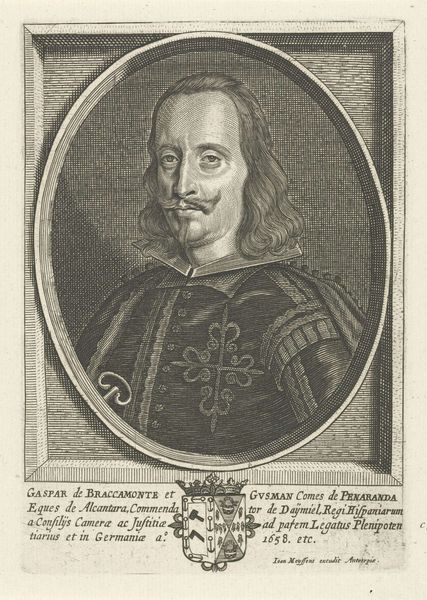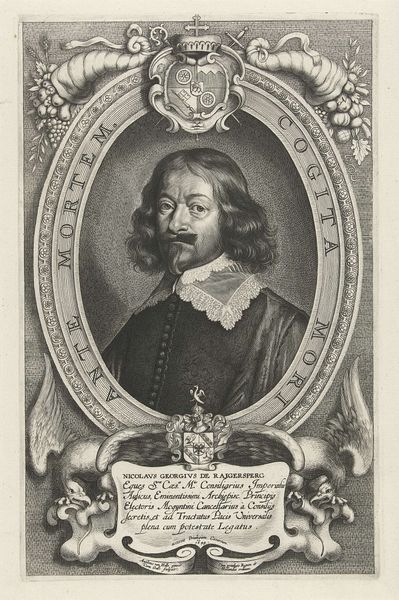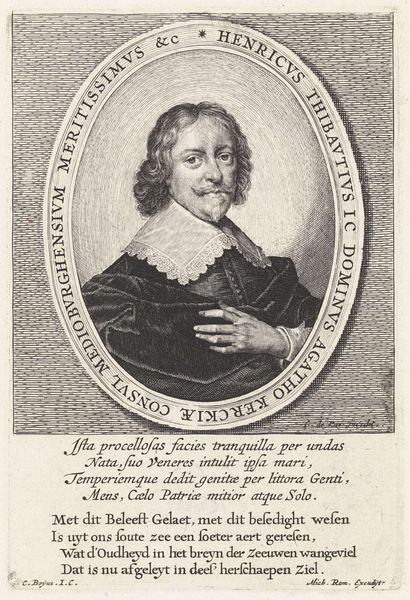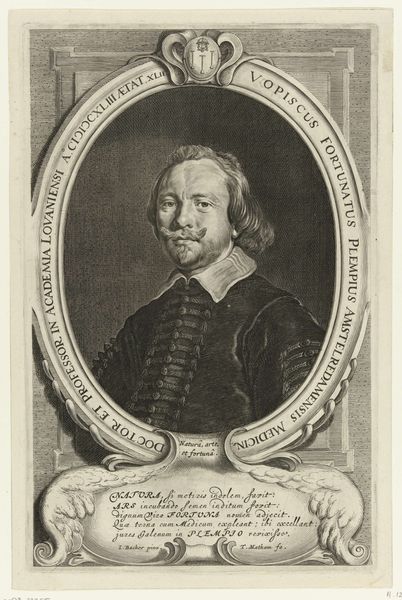
print, engraving
#
portrait
#
dutch-golden-age
# print
#
genre-painting
#
engraving
Dimensions: height 217 mm, width 134 mm
Copyright: Rijks Museum: Open Domain
Editor: Here we have a portrait of Johan van Mathenesse, a print dating sometime between 1623 and 1660. The artist is Pieter de Bailliu. It's really fascinating how much detail they managed to capture with engraving. What cultural narratives are woven into this image? Curator: This portrait, beyond depicting an individual, operates as a symbol of power and status in the Dutch Golden Age. Think about the subject's attire, the meticulous details of the lace and the fabric, the overall composition… all carefully constructed to communicate not just likeness, but societal standing. Consider the text at the bottom – do you notice anything specific about its function in relation to the image? Editor: I see it lists his titles and positions... so the portrait itself is almost like a visual resume, reinforcing his importance? Curator: Precisely. It speaks to the cultural value placed on civic duty and social rank. It’s a visual echo of the written word, reinforcing Mathenesse’s identity within a very specific societal framework. Moreover, look at the oval frame: It serves as a visual device, focusing our attention while also invoking a sense of classical antiquity, thereby aligning the sitter with virtues of the past. Editor: That makes me think about how portraits today are so different. We rarely see this level of deliberate symbolism. Curator: Exactly. Modern portraits often focus on capturing an individual's personality, whereas in the Dutch Golden Age, the portrait was just as much about representing the subject’s role within the broader societal structure. It's about public persona versus private identity. Now, consider: what lasting message do you think such constructed imagery was intended to leave for future generations? Editor: That power isn't just fleeting, but meant to be remembered and respected, maybe even emulated. This dive into symbolism made me rethink portraiture! Curator: Indeed! By recognizing the symbols, we unlock layers of meaning, transforming what appears to be a simple image into a complex cultural document.
Comments
No comments
Be the first to comment and join the conversation on the ultimate creative platform.
